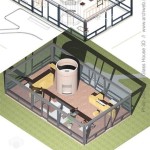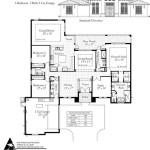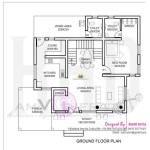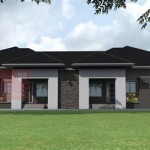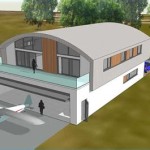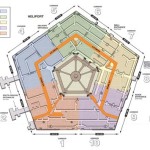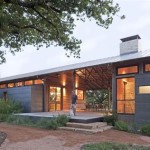Essential Aspects of Glenn Murcutt Simpson Lee House Plans
Glenn Murcutt, an esteemed Australian architect renowned for his sustainable and environmentally conscious designs, has crafted the Simpson Lee House, an architectural masterpiece that embodies his core principles. This article delves into the essential aspects of the Simpson Lee House plans, exploring their significance and how they contribute to the overall success of the design.
1. Passive Solar Design
Murcutt's designs are heavily influenced by passive solar principles, which maximize natural sunlight and ventilation to reduce energy consumption. In the Simpson Lee House, large north-facing windows allow ample sunlight to penetrate the interiors during winter, reducing reliance on artificial lighting and heating.
2. Cross Ventilation
Cross ventilation is another key element in Murcutt's architecture. The Simpson Lee House features operable windows and doors on opposite sides of the building, facilitating natural air circulation. This passive cooling strategy minimizes the need for air conditioning, creating a comfortable and energy-efficient living environment.
3. Orientation to the Site
The orientation of the Simpson Lee House is meticulously considered to maximize solar gain and minimize wind exposure. The L-shaped plan is positioned to capture northern sunlight while protecting the house from prevailing winds. This strategic placement enhances the home's thermal performance and reduces energy usage.
4. Lightweight Construction
Murcutt's designs emphasize lightweight construction using materials such as steel and polycarbonate. The Simpson Lee House incorporates a steel frame and polycarbonate roofing, which reduce the overall weight of the structure. This lightweight construction minimises embodied energy and facilitates efficient transportation and assembly.
5. Connection to Nature
A hallmark of Murcutt's architecture is its seamless connection to the surrounding environment. The Simpson Lee House features extensive glazing and outdoor living spaces, blurring the lines between interior and exterior. This connection fosters a sense of tranquility and enhances the occupants' well-being.
6. Simplicity and Efficiency
Murcutt's designs prioritize simplicity and functional efficiency. The Simpson Lee House eschews unnecessary ornamentation or elaborate details, instead focusing on creating a practical and comfortable living space. The efficient use of space and materials minimizes waste and reduces the home's environmental impact.
7. Sustainability
Sustainability is at the core of Murcutt's architectural approach. The Simpson Lee House incorporates various sustainable features, such as rainwater harvesting systems, solar panels, and low-VOC materials. These measures reduce the home's environmental footprint and contribute to its long-term sustainability.
Glenn Murcutt Simpson Lee House Plans exemplify the principles of sustainable architecture, creating a home that is both aesthetically pleasing and environmentally responsible. By incorporating passive solar design, cross ventilation, and orientation to the site, the house efficiently utilizes natural resources to create a comfortable and energy-efficient living environment. Moreover, its lightweight construction, connection to nature, and emphasis on simplicity and efficiency contribute to its overall sustainability. These essential aspects serve as a testament to Murcutt's architectural ingenuity and his unwavering commitment to environmental consciousness.

Simpson Lee House Ozetecture Landscape Architecture Design Mount Wilson Timber

Revisited Simpson Lee House Architectureau
Perspective View Of The Simpson Lee House Scientific Diagram

From Left Scheme Of Air Movement In The Simpson Lee House Designed Scientific Diagram

Murcutt Simpson Lee Casa Eames Soleamiento Fabrica De Ladrillos

Simpson Lee House Area Shed Plans Prefab Homes

Murcutt Simpson Lee

11 Glenn Murcutt Ideas Architecture Architect House

Search Results Ncsu Libraries Collections

4 Architecture Styles That Find Harmony With Nature

